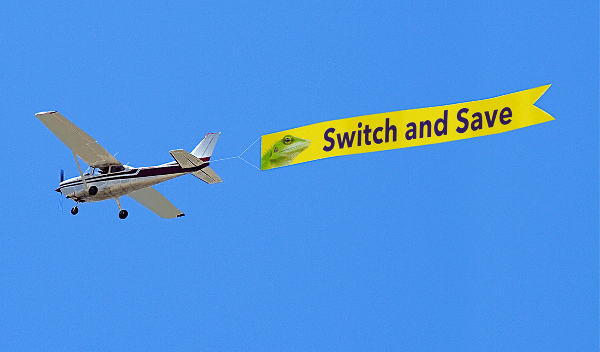Why “switch-and-save” marketing isn’t sustainable for the auto insurance industry
 In the past 20 years, the largest auto insurance carriers have taught consumers one thing: Comparison shopping can save you money.
In the past 20 years, the largest auto insurance carriers have taught consumers one thing: Comparison shopping can save you money.
Many carriers have spent big on advertising — almost $7 billion in 2019 — and many of those messages said, "People who switched (to us) saved money." This started as an attempt by carriers like GEICO and Progressive to gain market share by increasing awareness of their lower prices. It didn't take long for other insurers to realize that they could also claim that switching to them saves money.
The impact of churn on the insurance market
Cost is one of the biggest decision drivers for customers across industries and services. Insurers have been incredibly successful at making consumers feel as though they can control their insurance costs by comparison shopping. What insurers probably didn't expect was that their current customers would also hear this message — but they have, loud and clear. Over 30 million drivers are estimated to switch auto insurance companies annually.
The cost of cost-saving messaging
Across all industries, the cost of acquiring a new customer is five times the cost of retaining a customer; for insurance, it is nine times as expensive. As churn has increased over the past 20 years, insurers have also increased advertising in an attempt to maintain market share. At the same time, call center management, the technology associated with fielding customer inquiries, and the termination process have all become more expensive. These rising operational costs drive the need for increased advertising investment, creating a vicious spending cycle that results in higher consumer costs and additional churn.
The effects on market share
Currently, the top 10 insurance companies write about three-quarters of automobile policies. Twenty years ago, the top 10 companies were writing less than half. Carriers that have positioned their brands as low-cost insurers have seen the most growth during this time. GEICO and Progressive, both known for "switch-and-save" messaging, have doubled their market share.
However, companies that have strong brands based on customer service and trust are also growing. Brands like USAA and AMICA have also seen significant growth in market share.
How to stay competitive when you don't compete on price
Strong messaging (whether about price, customer service, or trust) has helped insurers gain and retain customers, while carriers that try to straddle the line between price and trust seem to have lost share. With no compelling positioning, customers are increasingly likely to be drawn to another insurer.
The first step to building a strong identity includes brand auditing, message tracking, or customer experience monitoring to understand how customers are perceiving your brand. Hearing the voice of your customers allows you to craft messaging that not only supports your brand image but also resonates with your customers.
Don't get stuck in the middle
Consolidation is likely to continue. Regardless of your market share, the best way to compete in the market is to understand how your members understand your brand. That positioning should drive every aspect of your brand and not just your marketing messaging. Refining, clarifying, and applying that lens to customer interactions — whether digital, over the phone, or in-person — will strengthen your brand.
If you're not sure how you're perceived in the marketplace or want to strengthen that image, we're here to help. Our financial market research experts can work with you to uncover that perception and cultivate your brand positioning to drive customer loyalty for the long run.

